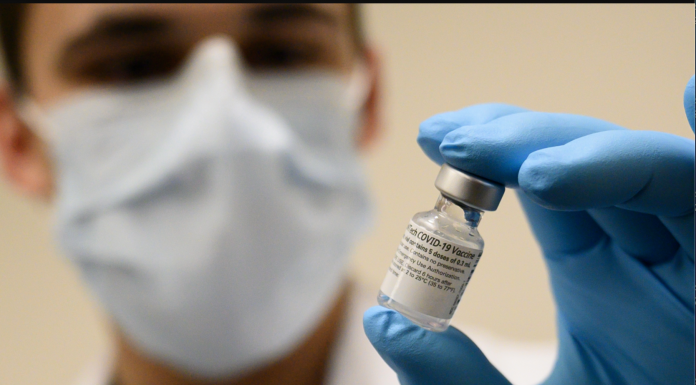PLUS: How do mRNA vaccines work?
Healthline – Some people who have received the COVID-19 vaccination report they feel ill after getting their first shot.
Even more say the second shot can be followed by symptoms such as fever, fatigue, headache, and soreness at the injection site on their arm. In most cases, that’s actually a good thing.
These common symptoms are typically signs that the vaccine has triggered a response by your immune system. And that’s what it is supposed to do.
Dr. Debra Powell, the chief of infectious diseases at Tower Health in Pennsylvania, told Healthline:
“When you feel sick or have a fever, that’s largely your body responding.”
“It’s usually a very short-term thing and much better than getting COVID and being sick for 2 weeks or in the hospital.”
Millions of doses, few problems
To date, more than 55 million doses of the COVID-19 vaccine have been administered in the United States, according to the Centers for Disease Control and Prevention (CDC).
About 15 million people have already received a second dose.
Slightly more Americans have received the vaccine developed by Pfizer-BioNTech (28 million) than the Moderna-developed vaccine (26 million).
Both shots are mRNA vaccines, which activate the immune system by getting it to identify a type of protein found in the virus that causes COVID-19.
“The first vaccine teaches your body how to react to the virus,” said Powell.
Armed with antibodies and memory T cells that recognize the virus protein from the first shot, the immune system response tends to be more robust when the second dose is delivered, she noted.
Side effects were expected
In applying for emergency use authorization from the Food and Drug Administration (FDA), both Pfizer and Moderna disclosed side effects experienced by participants during clinical trials for the vaccines.
The real-world experience with the vaccine seems to closely reflect what researchers observed.
For starters, side effects tend to be more common after the second dose of the vaccine … Click source below to read more.
How do mRNA vaccines work?
MEDICAL NEWS TODAY – Most vaccines contain an infectious pathogen or a part of it, but mRNA vaccines deliver the genetic instructions for our cells to make viral or bacterial proteins themselves.
Our immune system responds to these and builds up immunity.
Messenger RNA (mRNA) is a single-stranded molecule naturally present in all of our cells.
It carries the instructions for making proteins from our genes, located in the cell nucleus, to the cytoplasm, the main body of our cells.
Enzymes in the cytoplasm then translate the information stored in mRNA and make proteins.
An mRNA vaccine delivers the instructions for making a bacterial or viral protein to our cells. Our immune system then responds to these proteins and develops the tools to react to future infections with the pathogen.
mRNA vaccine technology is not new, but there were no mRNA vaccines that had approval for use in humans until recently.
What is different about mRNA vaccines?
Some vaccines use a whole virus or bacterium to teach our bodies how to build up immunity to the pathogen. These pathogens are inactivated or attenuated, which means weakened. Other vaccines use parts of viruses or bacteria.
Recombinant vaccine technology employs yeast or bacterial cells to make many copies of a particular viral or bacterial protein or sometimes a small part of the protein.
mRNA vaccines bypass this step. They are chemically synthesized without the need for cells or pathogens, making the production process simpler. mRNA vaccines carry the information that allows our own cells to make the pathogen’s proteins or protein fragments themselves.
Importantly, mRNA vaccines only carry the information to make a small part of a pathogen. From this information, it is not possible for our cells to make the whole pathogen.
Both mRNA COVID-19 vaccines that Pfizer/BioNTech and Moderna have developed cannot cause COVID-19. They do not carry the full information for our cells to make the SARS-CoV-2 virus, and therefore, cannot cause an infection … READ MORE.
FROM MICHIGAN MEDICINE: OUR 5-PART SERIES ON COMMON VACCINE CONCERNS
- Part I: “Corners Were Cut In Covid Vaccine Testing”: TRUE or FALSE?
- Part II: “The Vaccine Changes Your DNA”: TRUE or FALSE?
- Part III: “People Are Getting Seriously Ill From Vaccines”: TRUE or FALSE?
- Part IV: “The Vaccine Is Designed For Population Control”: TRUE or FALSE?
- Part V: “COVID Vaccines Have Tracers and Baby Parts”: TRUE or FALSE?



